|
|
|---|
| IBM Portable PC |
| Model: | 5100 |
| Introduced: | September, 1975 |
| Price: | US $19,975 w/ 64K RAM |
| Weight: | 55 pounds |
| CPU: | IBM proprietary, 1.9MHz |
| RAM: | 16K, 64K max |
| Display: | 5" monochrome monitor |
| 64 X 16 text |
| Storage: | Internal 200K tape (DC300) |
| Ports: | tape / printer I/O port |
| OS: | APL and/or BASIC |
| Serial #: |
| BASIC: | 10-11503 |
| APL: | 10-13616 |
|
Check-out our
YouTube videos
|
| |
|---|
|
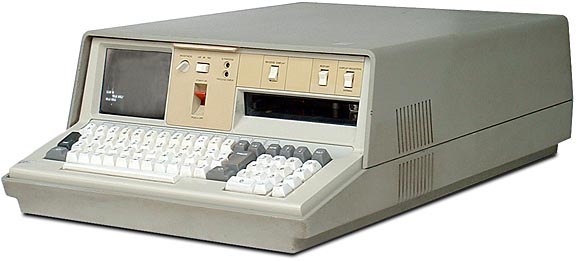
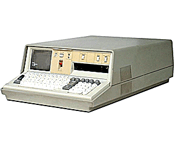
The Model 5100 is IBM's first minicomputer, i.e. not a mainframe, and is also considered one of the world's first portable computers.
It is preceded only by the Hewlett-Packard HP-9830A from 1973. Although at 55-pounds, the 5100 might best be described
as "self-contained" rather than "portable".
There were very few other computers available at the time, and nothing even close to the capabilities of the 5100.
It is a very complete system - with a keyboard, built-in data storage, and a full-screen display. It was also very expensive -
up to US$20,000. It was specifically designed for professional and scientific problem-solvers, not business users
or hobbyists.
There are twelve different models of the 5100.
They were all rather expensive:
| Memory | Programming language |
| | APL | BASIC | Both |
| 16K | A1 - $8,975 | B1 - $9,975 | C1 - $10,975 |
| 32K | A2 - $11,975 | B2 - $12,975 | C2 - $13,975 |
| 48K | A3 - $14,975 | B3 - $15,975 | C3 - $16,975 |
| 64K | A4 - $17,975 | B4 - $18,975 | C4 - $19,975 |
|
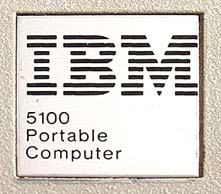
|
Depending on options installed, the 5100 can run the APL and/or BASIC programming languages.
Apparently, APL was a difficult task for IBM to accomplish with an interpreter in the 5100, so instead they
wrote an emulation program so that the S/360 mainframe version of APL could be run instead --
The 5100 is like a desktop IBM S/360 mainframe computer which only runs APL.
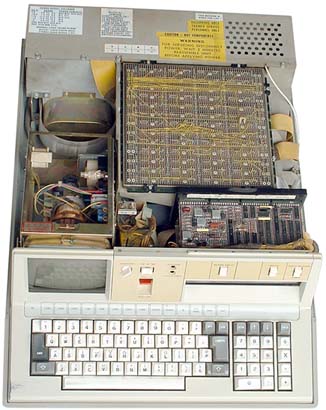 Opening the 5100, you encounter an upside-down circuit board with thousands of sharp wires sticking straight up.
Opening the 5100, you encounter an upside-down circuit board with thousands of sharp wires sticking straight up.
What are they? This is the bottom of the backplane in which all of the circuit board plug into.
Some jumpers can also be installed here for different configuration options.
As seen below, it swings open on hinges to allow access the circuit boards, and for easy access to all of the other
system components.
In 1978, IBM 5100 was superseded by the IBM 5110 line of computers.
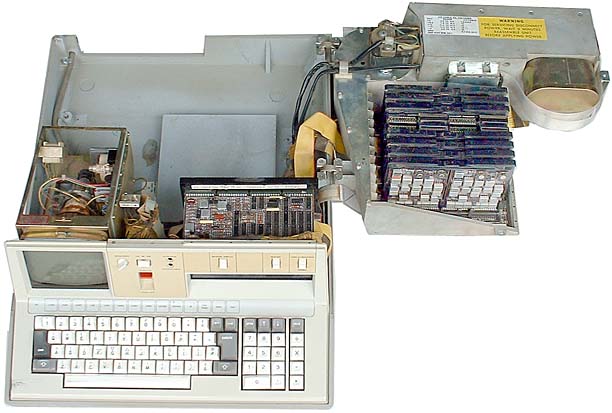
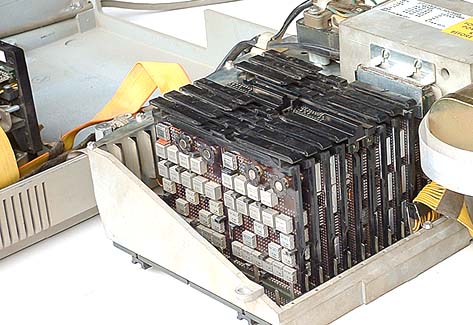
Most of the circuit boards have unusual IBM proprietary silver-colored metal integrated circuit (IC) chips.
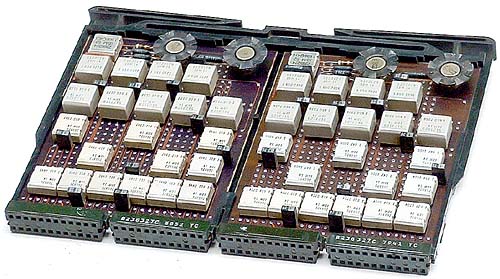
There isn't a discrete CPU (Central Processing Unit) as in modern computers, the circuit board
seen below is the "processor" - it has over 15 large chips.
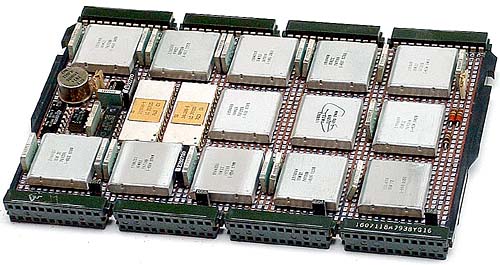
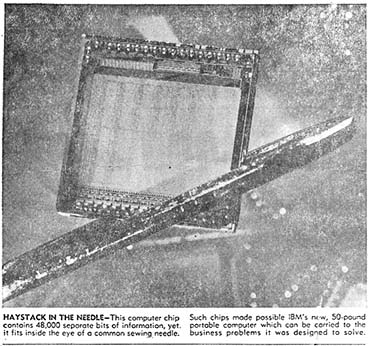
Caption: "HAYSTACK IN THE NEEDLE - This computer chip contains 48,000 separate
bits of information, yet it fits inside the eye of a common sewing needle.
Such chips made possible IBM's new, 50-pound portable computer which can be carried to the business problems
it was designed to solve."
|
|
|---|
Partial History of the IBM Computers |
- 1967: IBM builds the worlds first floppy disk.
- 1967: IBM introduces the worlds first 8" floppy disk.
- 1973: IBM introduces the IBM 3340 hard disk unit, known as the Winchester.
- 1975: September - IBM's Entry Level Systems unit unveils "Project Mercury", the IBM 5100 Portable Computer.
- 1981: September - IBM releases the IBM 5150 PC Personal Computer.
- 1982: April - Eight months after the introduction of the IBM PC, 50,000 units have been sold.
- 1982: May - Microsoft releases MS-DOS 1.1 to IBM, for the IBM PC.
- 1982: June - The first IBM PC clone, the MPC, is released by Columbia Data Products.
- 1982: August - After one year of production, IBM ships the 200,000th IBM PC.
- 1982: November - Compaq Computer introduces the
Compaq Portable PC, the first 100% IBM compatible. It cost Compaq US$1 million to create an IBM-compatible ROM BIOS that did not
violate IBM's copyright.
- 1982: At the West Coast Computer Faire, Davong Systems introduces its 5MB Winchester Disk Drive
for the IBM PC, for US$2000.
- 1983: March - IBM announces the IBM PC XT, with a 10 MB hard drive,
128KB RAM and a 360KB floppy drive. It costs US$5000.
- 1983: November - IBM announces the IBM PCjr.
It is US$700 for the bare configuration.
- 1984: February - IBM introduces the IBM Portable PC.
- 1984: March - IBM ships the IBM PCjr. It uses the 8088 CPU, 64KB RAM, and one 5.25-inch disk drive, but no monitor. It costs US$1300.
- 1984: August - IBM announces the PC AT, for US$4000-6700.
- 1985: April - IBM abandons production of the IBM PCjr.
- 1986: April - IBM announces the IBM PC Convertible, 80C88-based, 256K RAM, and two 720K floppy disks, for US$2000.
- 1986: April - IBM discontinues the IBM Portable PC.
- 1986: September - IBM announces the IBM PC-XT Model
286, with 640KB RAM, 1.2MB floppy drive, 20MB hard drive,
serial/parallel ports, and keyboard for US$4000.
- 1987: IBM discontinues the IBM PC (model 5150) line.
Source:
Chronology of Events in the History of Microcomputers
| |
|---|
|
Return to the Obsolete Technology Homepage

Copyright 2024
This page last updated on 11/27/2022 23:37:09
All logos and trademarks on this site are property of their respective owner.
|



 Opening the 5100, you encounter an upside-down circuit board with thousands of sharp wires sticking straight up.
Opening the 5100, you encounter an upside-down circuit board with thousands of sharp wires sticking straight up.




